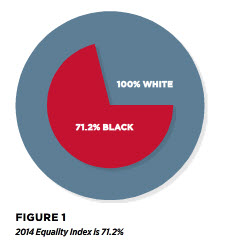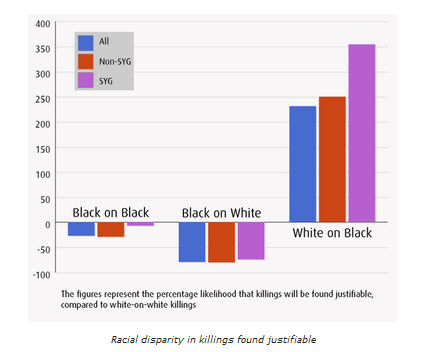33. Violations of CERD
34. The United States has violated Articles 1(a), 1(c) and 1(d)m Article 2, 3 and Article 5 of the Convention on the Elimination of All Forms of Racial Discrimination.
35. The United States has violated Articles 1(a), 1(c), 1(d) by maintaining laws that permit and authorize discrimination based on negligent conduct rather than intentional conduct. The United States has blocked direct access to the court for disparate impact discrimination. In 2001, in Alexander v. Sandoval, the Supreme Court held that individuals could not sue for disparate impact discrimination because it was a right of action created through regulation. The Court held that the only recourse was to file a complaint with the appropriate government regulation. This could have been remedied by the passage of a law granting direct access to the courts. However, in the 13 years since that decision there has been no attempt to solve this problem. This is devastating since most discrimination is disparate impact or negligent discrimination based on implicit bias rather than intent. Thus, the United States has allowed a law to stand that perpetuates racial discrimination.
36. Article 3, Since slavery, the United States has maintained or supported legal segregation in housing and education. Despite the Brown v. Board of Education and Civil Rights Act of 1964, the segregation and isolation of black children has increased since 1990. In fact, “40 percent of black students attend schools that are more than 90 percent minority, up from 34 percent 20 years ago. Then, black students typically attended schools where 40 percent were low-income; it's now 60 percent.”
37. Furthermore, through mass incarceration, United States have de facto re-established slavery. The prison system has become a financial center fueled by black bodies. “Between 1990 and 2009, the inmate population of private prisons grew by 1,664% . Today approximately 130,000 people are incarcerated by for-profit companies. In 2010, annual revenues for two largest companies — Corrections Corporation of America and the GEO Group — were nearly $3 billion.”
38. Article 5(a), 5(b), 5©: African American (DAEUS) communities are immersed in a sea of systemic and cultural racism that limits the individual and community choices and opportunities. Systemic and cultural racism are evident in wealth and income discrimination, educational discrimination, criminal justice discrimination, healthcare discrimination, housing discrimination, employment discrimination, food and water discrimination, land discrimination, and in the targeting of DAEUS communities with tobacco, guns, alcohol and drugs.
39. The total 2013 Equality Index of Black America was 71.2%, meaning that black Americans enjoy less than 75% of the benefits and privileges that white Americans do.

40. The situation has gotten worse since 2006, with the equality index dropping by two points. The most disturbing drop is in “Social Justice."
41. In eight years, Blacks have lost almost 20 points in “Social Justice," meaning that Blacks have only slightly more than 50% of the rights and opportunities that whites do when it comes to “equality before the law” and “victimization and mental anguish." This is due to rampant racial profiling and "Stand your Ground" laws which permit killings based on fear and suspicion. Given the anti-black bias, these laws are not enforced equitably.

42. Even more disturbing is the widespread lynching of Black Americans. Between 1882 and 1968, there was 3446 known lynching. That is, on average 40 per year. In 2012, there were 136 extrajudicial killings or lynching of unarmed black men by police, security guards and vigilantes. On total, one black person was killed in an extrajudicial shooting every 28 hours.
43. Another area of racial oppression is the death penalty and mass incarceration. One black man in three and one black woman on ___ will be imprisoned at some point. This is especially disturbing as the for-profit prison system takes over responsibility for incarceration. Given the profit and economics in prisoners, it returns black bodies to the state of slavery and legal apartheid. The federal government has done little to stop this type of racial discrimination.
44. Systemic and cultural racism has an impact on all people of color: Asian, native American and Hispanic. Because of Anti-black racism, however, Blacks suffer disproportionately. The burden that is being carried by descendants of enslaved Africans in the United States (DAEUS) is unknown because the United States does not collect data specific to our status.


